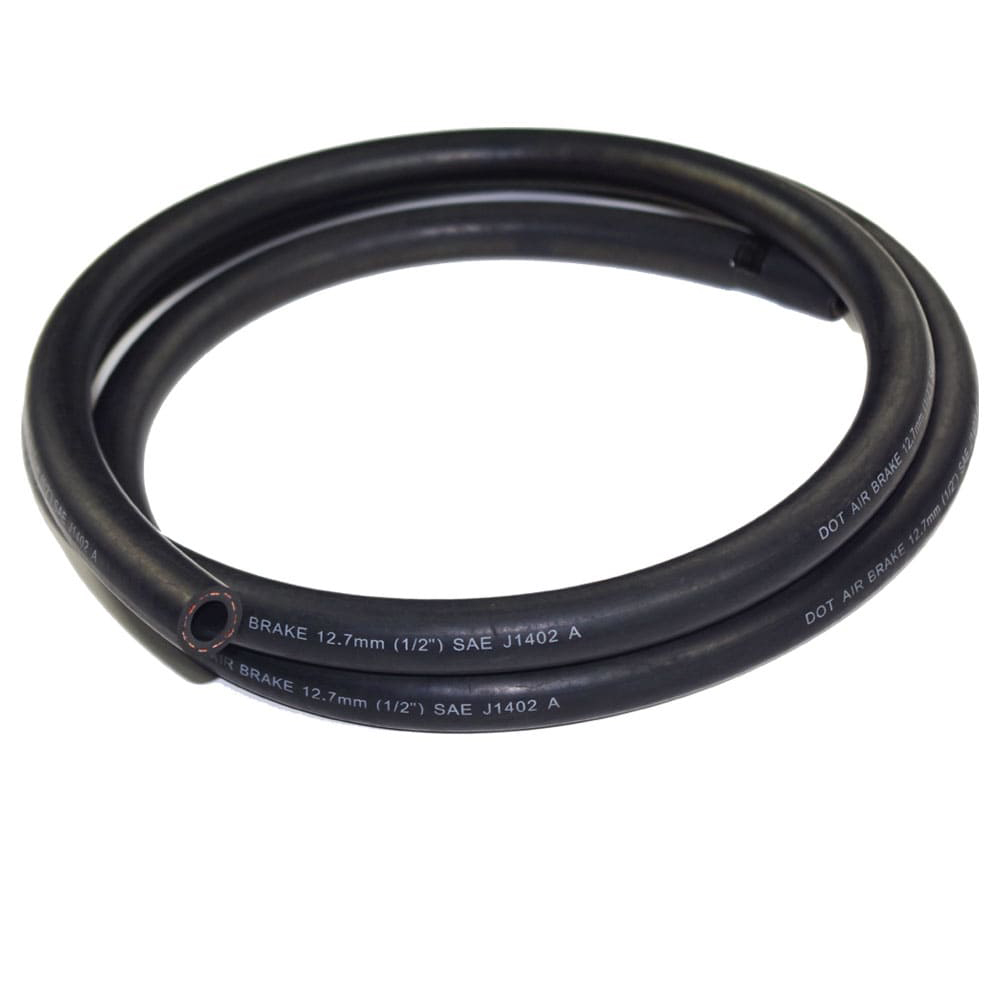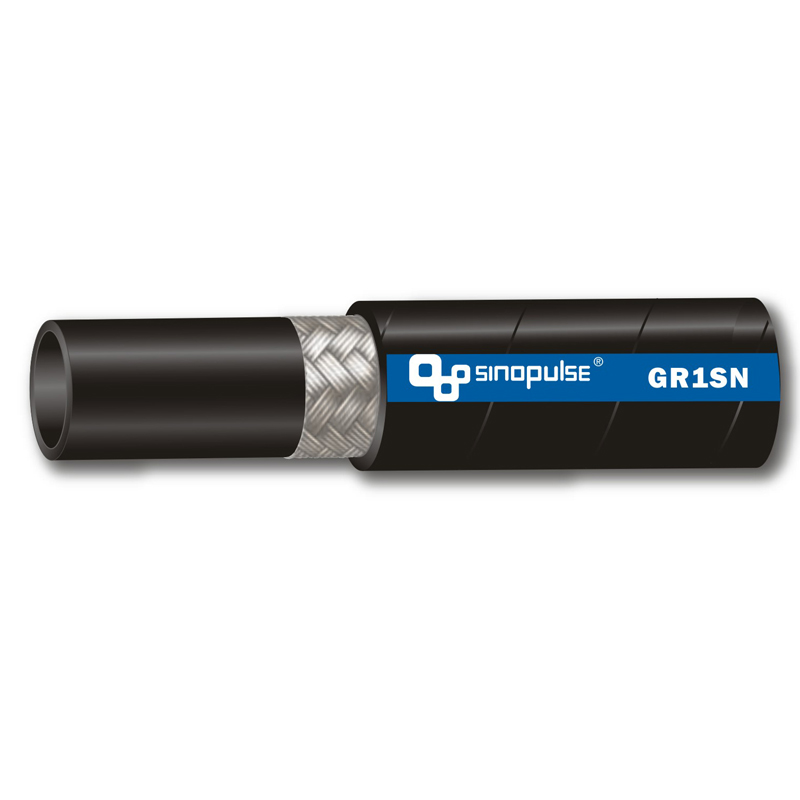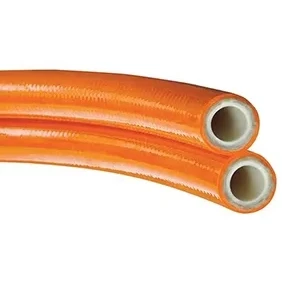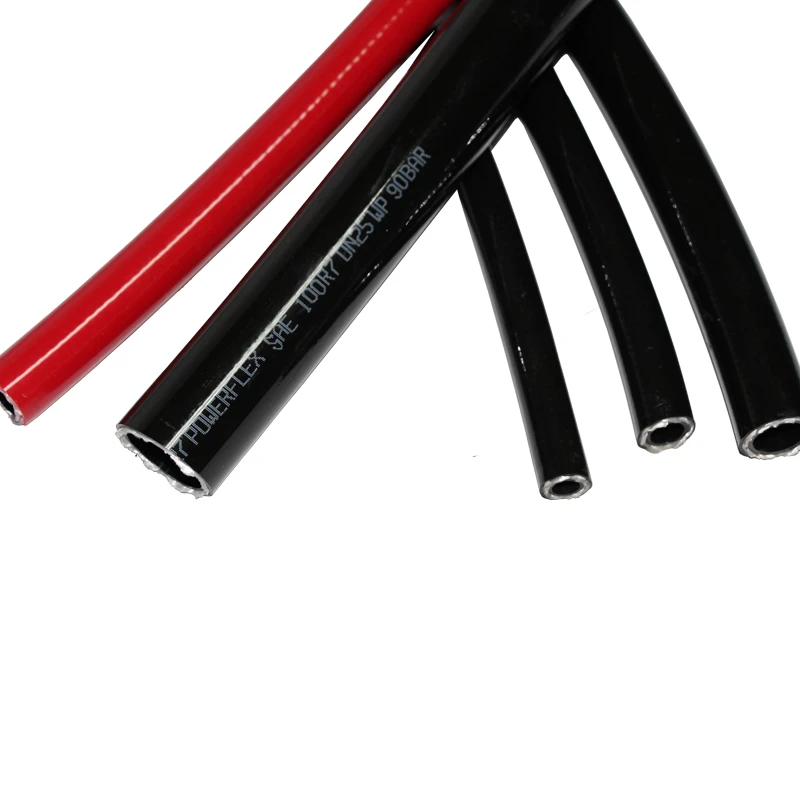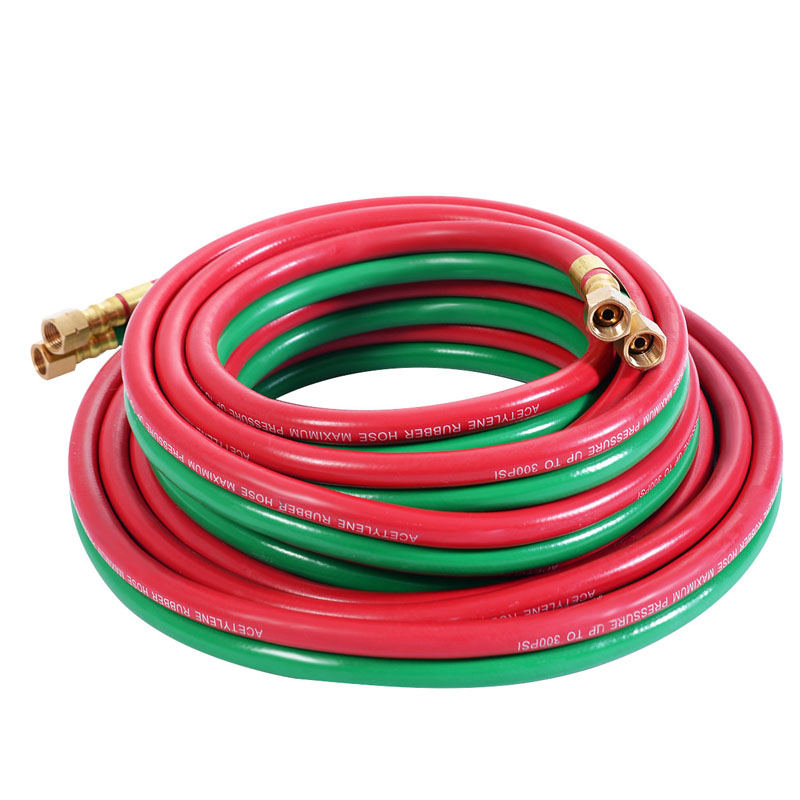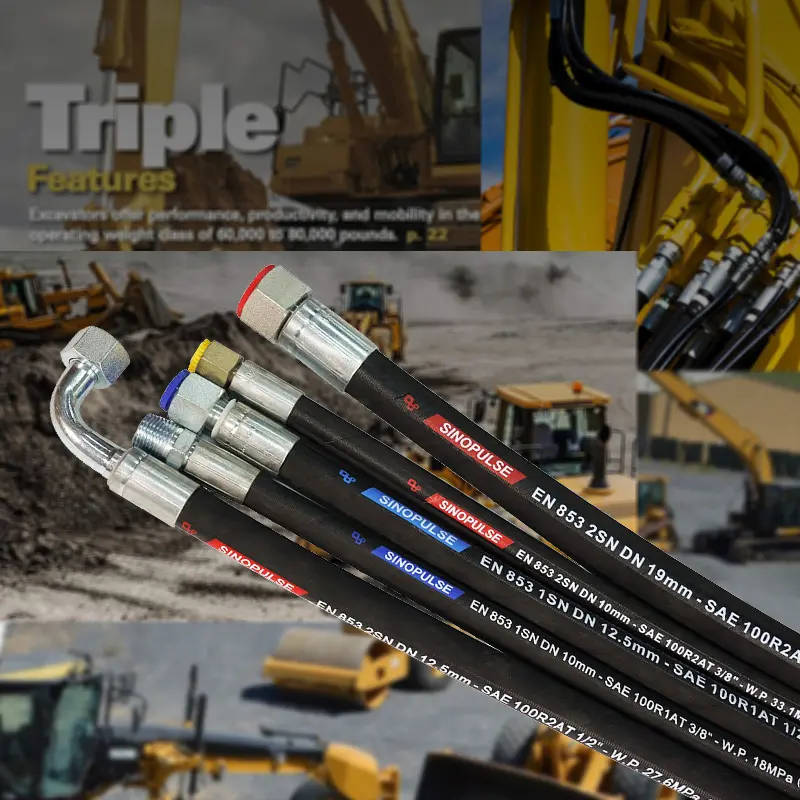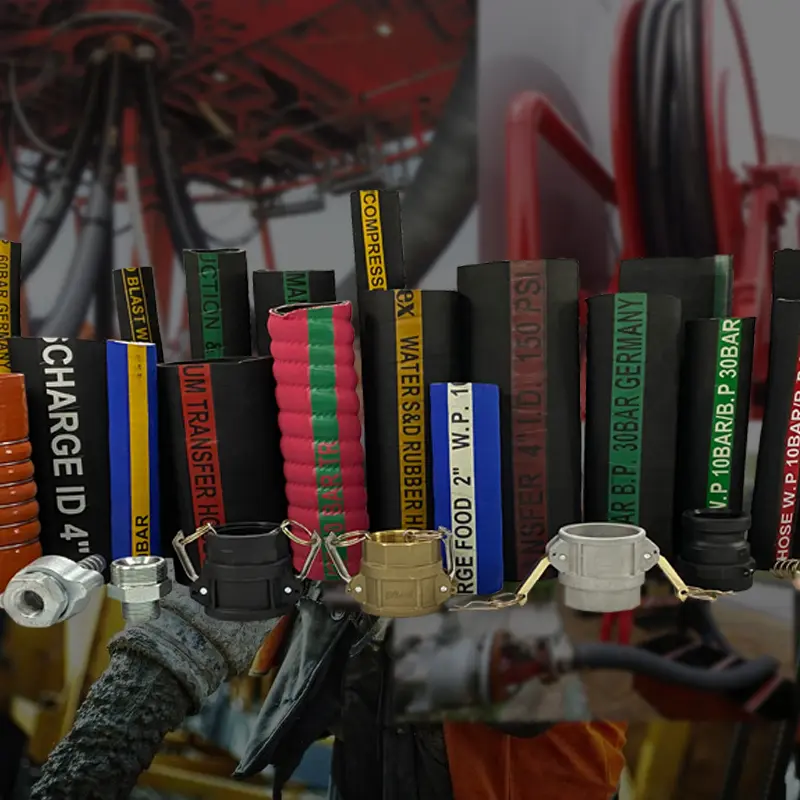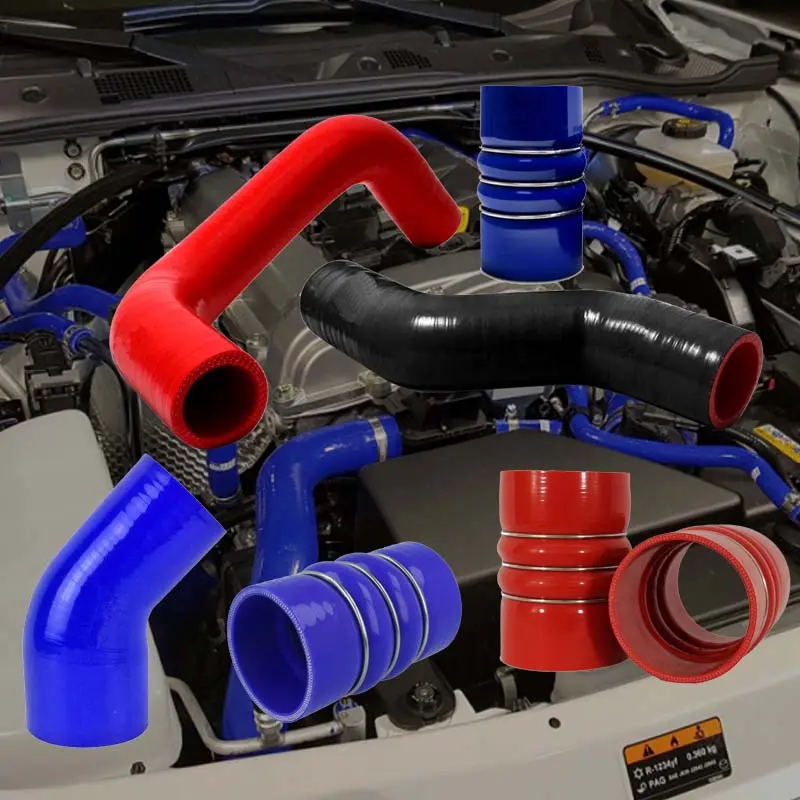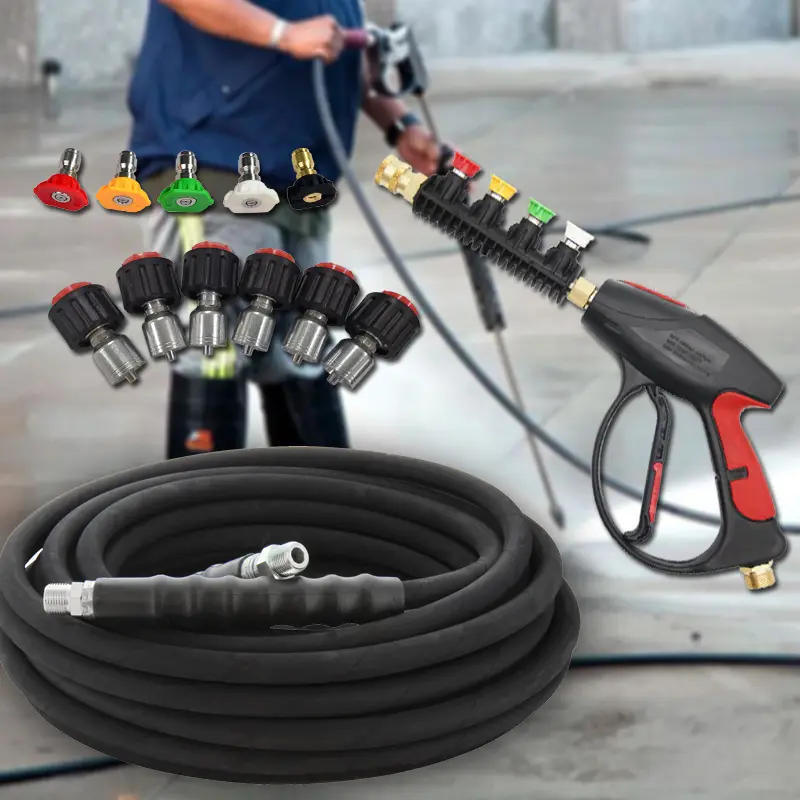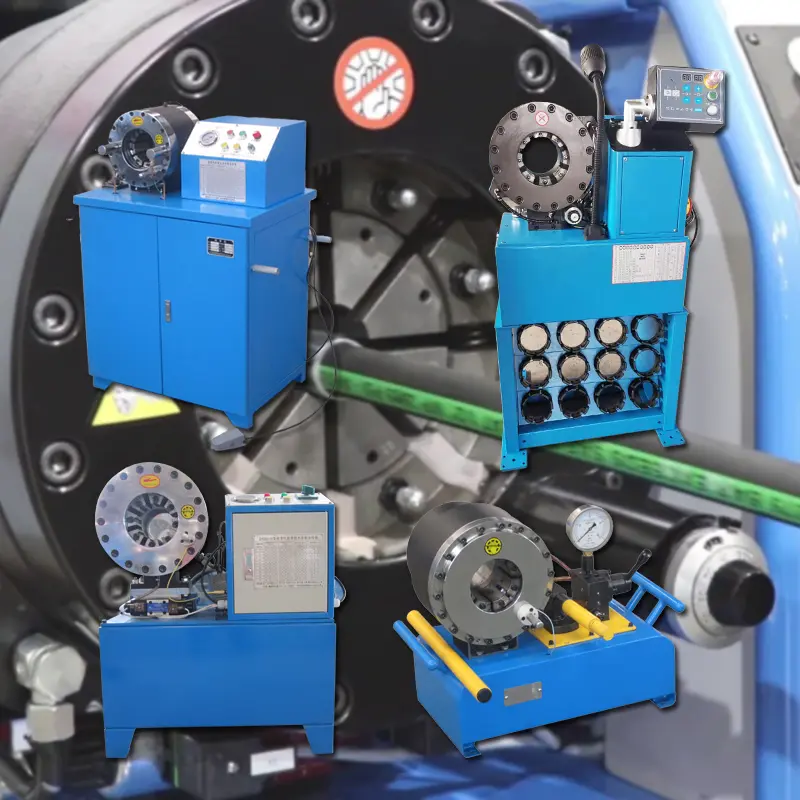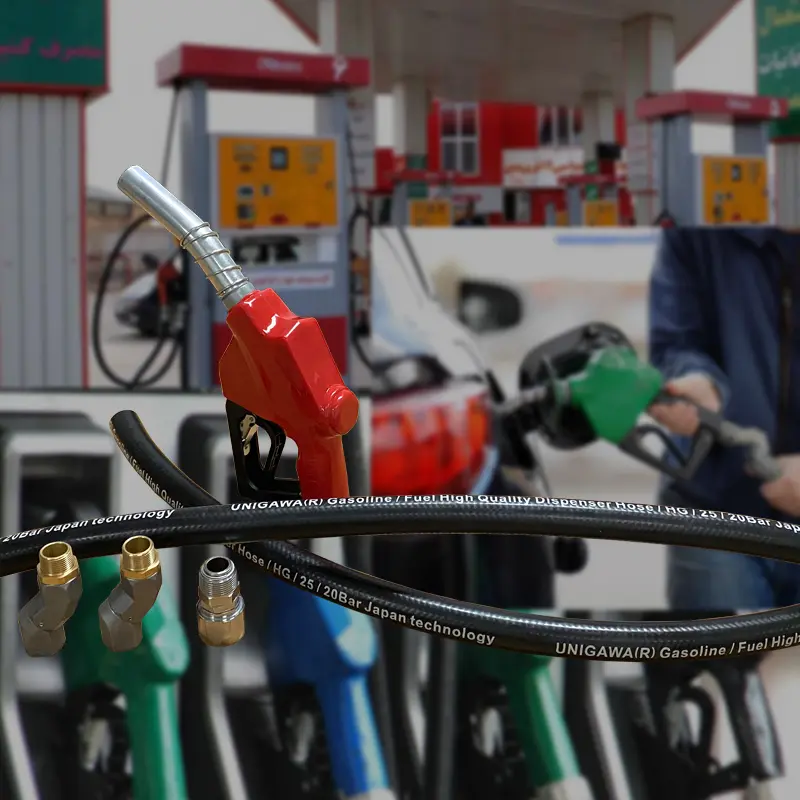Air Hose Quick Connect fittings are essential components in hydraulic systems, enabling efficient and secure connections between hoses and equipment. These specialized connectors simplify the assembly process, allowing for rapid disconnection and reconnection without tools, which is crucial for maintenance and system modifications. Air Hose Quick Connect designs vary by application but typically feature a plug-and-socket mechanism with internal valves that prevent fluid loss during connection and disconnection. Their compatibility with different hose types, including rubber air hose and high pressure air hose, makes them versatile across industrial, automotive, and agricultural hydraulic systems. Proper use of Air Hose Quick Connect fittings ensures leak-free operation, reducing downtime and enhancing system safety.
Rubber Air Hose serves as the flexible conduit for hydraulic fluid transmission, requiring careful handling during connection to maintain its integrity
Made from durable synthetic rubber reinforced with textile or steel braids, Rubber Air Hose is designed to withstand pressure, temperature variations, and environmental exposure. Before connecting, inspect the Rubber Air Hose for signs of damage such as cracks, bulges, or abrasions, as compromised hoses can lead to leaks or system failure. The inner diameter of the Rubber Air Hose must match the specifications of the chosen fittings to ensure proper flow and pressure handling, making accurate measurement a critical first step in the connection process.
Pneumatic Hose systems rely on precise connection techniques to maintain optimal pressure and airflow. Unlike standard hoses, Pneumatic Hose is specifically engineered for compressed air applications, requiring connections that minimize pressure drop and air leakage. When preparing to connect Pneumatic Hose, ensure the hose ends are cut straight using a sharp blade to prevent fraying, which can obstruct flow or cause uneven seating in fittings. The outer diameter of the Pneumatic Hose should be measured to select compatible clamp sizes or crimping dies, as loose connections can lead to inefficiency or dangerous blowouts under pressure.
Airline Hose installation demands attention to both hose routing and connection security to ensure long-term reliability
Airline Hose is commonly used in automation and manufacturing systems where consistent airflow is vital, making proper connection techniques essential for operational efficiency. Before attaching fittings, clean the Airline Hose ends with a lint-free cloth to remove debris, which can contaminate the system or damage seals. Marking the hose at the correct insertion depth based on fitting specifications helps ensure full engagement, a critical factor in preventing leaks in high-vibration environments.
High Pressure Air Hose connections require specialized procedures to handle the extreme pressures they encounter
These hoses, often reinforced with multiple layers of steel wire, must be connected using fittings rated for their maximum working pressure to avoid catastrophic failure. When preparing High Pressure Air Hose for connection, verify that both the hose and fittings meet the system's pressure rating, which is typically marked on the hose jacket and fitting body. Use a caliper to measure the hose's inner and outer diameters accurately, ensuring a proper match with the fitting's barb or crimping area to create a secure seal under high pressure.
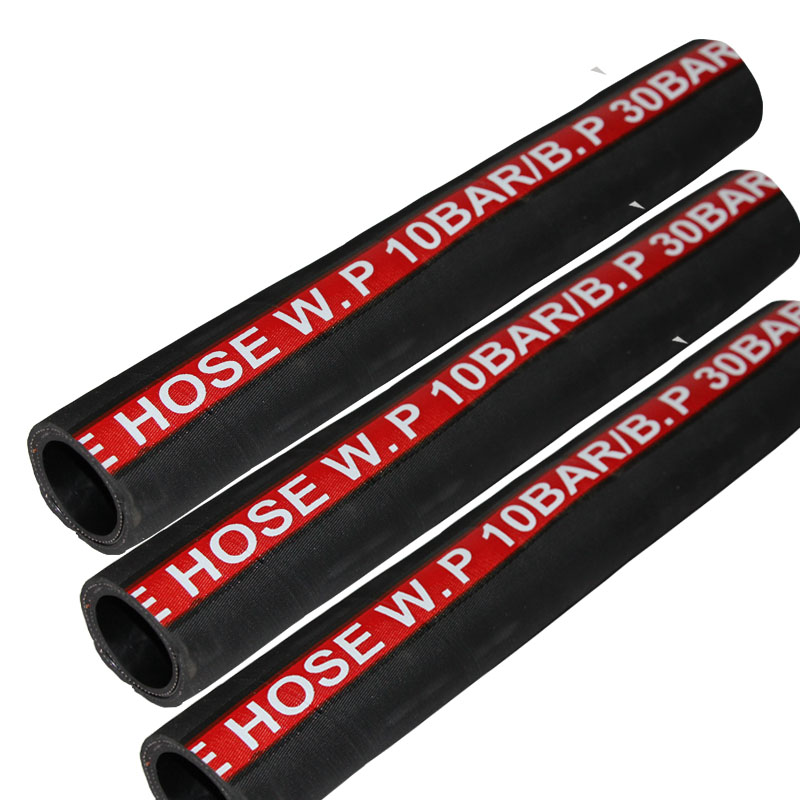
Preparation materials for hydraulic hose connection include the selected hose (such as Rubber Air Hose or High Pressure Air Hose), compatible Air Hose Quick Connect fittings, a measuring tape or caliper, a sharp hose cutter, and appropriate cleaning supplies. Safety equipment like gloves and eye protection is also essential to prevent injury from sharp edges or accidental pressure release. Measure the required hose length carefully, accounting for bends and routing to avoid tension or kinking after installation. Document the hose's inner diameter, outer diameter, and maximum working pressure to ensure compatibility with the chosen fittings and the overall system requirements.
The connection process begins with cutting the hose to the measured length using a dedicated hose cutter for clean, square ends. Deburr the cut edges to remove any sharp fragments that could damage seals
Slide the appropriate ferrule or sleeve onto the hose if using crimp fittings, or prepare the end for push-on fittings by ensuring it is free of debris. For Air Hose Quick Connect fittings, align the male and female components, ensuring the hose is fully inserted into the fitting until a audible click confirms secure engagement. For crimp connections, use a calibrated crimping tool to compress the ferrule onto the hose and fitting at the specified pressure, creating a permanent, leak-free seal. Finally, inspect the connection for proper seating, ensuring no gaps or misalignment before pressurizing the system.
In summary, successful hydraulic hose connection requires careful attention to hose selection, proper measurement, and adherence to connection procedures. Air Hose Quick Connect fittings streamline the process, while Rubber Air Hose, Pneumatic Hose, Airline Hose, and High Pressure Air Hose each demand specific handling based on their design and application. Preparation materials like measuring tools and cleaning supplies ensure accuracy and cleanliness, while following step-by-step connection techniques—from cutting and deburring to fitting engagement—guarantees secure, leak-free performance. By matching hose specifications to fitting requirements and prioritizing proper installation, hydraulic systems can operate efficiently, safely, and reliably across diverse industrial applications.
Rubber Air Hose FAQs
1. What are the key features of a high-quality rubber air hose?
A durable rubber air hose should have reinforced layers of synthetic rubber and textile braiding for maximum flexibility and pressure resistance. The inner tube must resist oil, abrasion, and weathering, while the outer cover should be designed to prevent kinking and cracking. Look for hoses with a working pressure rating that exceeds your application requirements.
2. How do you properly store a rubber air hose to extend its lifespan?
Coil the rubber air hose loosely in a dry, cool area away from direct sunlight and extreme temperatures. Avoid sharp bends or hanging it by its ends, as this can cause permanent deformation. For long-term storage, apply a light coating of rubber protectant to prevent drying and cracking.
3. What safety precautions should be taken when using a rubber air hose?
Always inspect the rubber air hose for cracks, bulges, or leaks before use. Never exceed the recommended pressure rating, and ensure all connections are secure to prevent accidental disconnection under pressure. Wear safety goggles when working with high-pressure air systems to protect against potential hose whip.
4. How do you choose the right diameter for a rubber air hose?
Select the diameter based on required airflow and operating pressure—larger diameters maintain higher airflow with less pressure drop over long distances. Standard rubber air hose sizes range from 1/4" for light-duty tools to 1" for industrial applications. Consider both length and bend radius in your selection.
5. How do you connect a hydraulic hose and fitting to a rubber air hose system?
First, ensure the rubber air hose and hydraulic components have matching thread types and sizes. Cut the hose cleanly with a sharp blade, then insert the fitting and secure it with a crimping tool or clamp. Always pressure-test the connection at a lower setting before full operation to check for leaks. Proper alignment prevents stress on the joint.
Product Application









